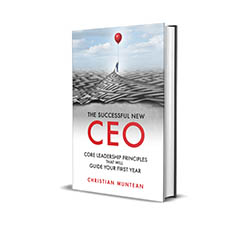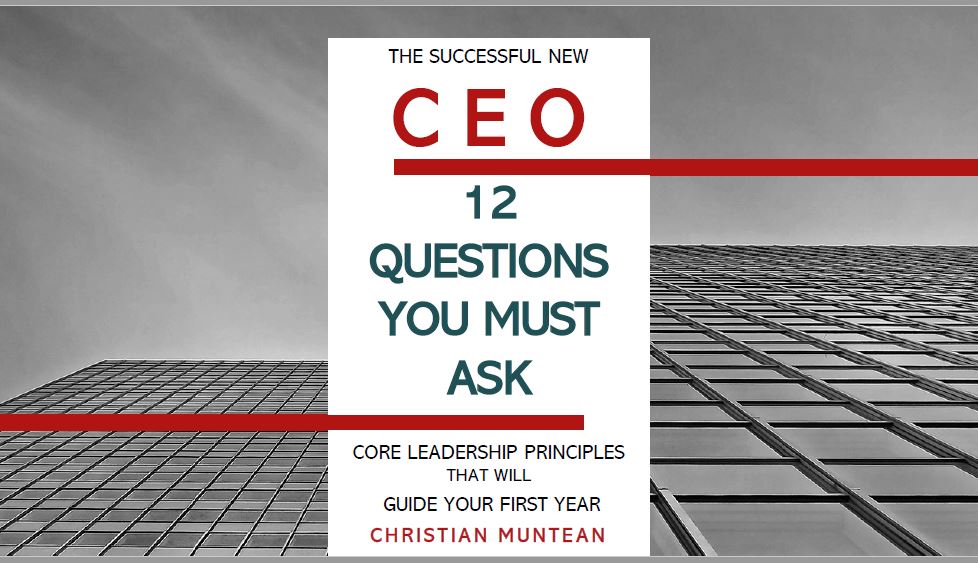Intensity: Learning to “bring it” as a leader

Intensity: Learning to “bring it” as a leader.
Imagine two different people:
The first is a classical guitarist on a stage. She begins to play. You are impressed with her technical skill and precision. She closes her eyes and seems lost in the music. So are you. She draws the entire audience in with her. When the song ends, you feel like you are waking up. You have no idea how long she played, but you never wanted it to end.
Now imagine a world-class powerlifter. He walks up to a barbell loaded with one thousand pounds. The room is loud with cheers, he’s sniffing smelling salts and snorting like a bull. Then, he positions in front of the bar. For a moment, he’s quiet and focused. Suddenly, his body tenses with exertion, he extends his legs, drives his hips forward and half a ton is lifted from the ground.
Both are doing what would be impossible for most others. To get there, they both learned to practice with intensity. Not only did they persevere and show up for training after training – but they learned to push themselves hard. Not only did they learn to tolerate discomfort, but they learned to push themselves to – and beyond – their perceived limits.
As they did, both grew in their skill. Over time, they took their skills to an exemplary level. Yes, natural talent and genetics likely factor in. But neither talent nor genetics can achieve these results on their own.
They both learned how to practice with intensity. Intensity is two things:
- An ability to exert themselves near to or at their limits.
- A profound focus of attention and effort.
This is uncomfortable. Our brains and bodies prefer homeostasis. Staying within the comfort zone is easier. It’s comfortable.
But growth is triggered with intense focus and exertion.
One of the skills of great musicians, athletes, and leaders (in any profession) – is the ability to regularly enter into a state of intensity and to be able to do this at will.
Intensity Produces More
When it comes to fitness, intense effort is what best triggers growth. Exertion levels typically need to be above 80% of capacity. At this point, the Central Nervous System triggers an adaptive response in the body.
Athletes who are focused on building strength or power know that they have to push themselves to the point where their central nervous system triggers an adaptive response. This is often around 80% to 90% of their total capacity.
This is one important reason that most people who work out regularly don’t see the results they hope for. They simply don’t engage the kind of intensity required to force change.
The Flipside of Intensity
On the other hand, skilled athletes and ambitious leaders have learned this. They learn how to engage intensity and discover its benefits. The downside is the tendency to take it too far. They don’t allow themselves enough rest and recovery. The result is injury, burnout, and poor decisions.
The ideal, both in fitness and in leadership, is to be able to cycle back and forth between times of great intensity and times of meaningful recovery.
Intensity is important but becomes destructive if not combined with regenerative downtime.
Intensity (Complete concentration and focused efforts)
Practicing Intensity
Intensity can be and should be practiced.
The most difficult aspect to learn, for most people, is learning to “turn it on.” In most cases, this simply means to focus all of your energy and concentration in one direction.
The second aspect to learn is to focus. But while it is one thing to learn to focus. It’s another to learn to focus in a productive direction.
But before you can even practice focus, you have to be able to “turn it on.”
Turning It On: How to Enter Intensity
To practice this, I recommend identifying your one or two most important or valuable activities:
- Set aside a time – regular, short amounts of time to focus exclusively on one of these valuable activities. Research has been done around 25-minute blocks, 50-minute blocks, and 90-minute blocks of time. I doubt the precise time matters as much as the idea of working in short, concentrated sprints.
- Additionally, if much of your work is in conversation (meetings, business development, negotiations, mentoring, etc.) learning to be fully attentive for the duration: Knowing what your goals are, being attentive to their verbal and physical cues, keeping the conversation on topic, holding others accountable.
- You can begin with just one of these sprints per day. But preschedule it.
- Create an environment that protects full attention: Close the door, put on headphones, listen to music that supports productivity, etc.
- Actively defend against anything that would break your attention: Turn off alarms, notifications, and phones. Let employees and colleagues know you aren’t available, etc.
- If you get distracted, don’t beat yourself up, just bring your attention back to the task.
Practicing Focus
What effective intensity looks like is situationally dependent. Learning to focus well is closely tied to learning to read situations.
To achieve focus, your intensity should be productively directed towards the desired goal. Many leaders know how to work hard. But they don’t know how to ensure that their intensity is focused in the right direction.
The easy test is – Is what you are doing delivering results? If you are intensely working towards something, and you’ve given it enough time, and your efforts aren’t delivering, it’s very possible that you are aiming in the wrong direction.
Summary
Intensity on its own won’t make you a leader. But it is a key element to making your leadership productive. It is absolutely required if you want to drive real growth and change in yourself or your team.
Do you feel that you are able to effectively “turn it on” when you need to?
Do you feel that your efforts at being intense are as productively focused as you’d like them to be?
What is one thing that you might start, stop or change that will help you achieve the results you want?
Take good care,
Christian
𝗧𝗵𝗲 𝗕𝗲𝘀𝘁 𝗧𝗶𝗺𝗲 𝘁𝗼 𝗖𝗿𝗲𝗮𝘁𝗲 𝗔𝗻 𝗘𝗺𝗲𝗿𝗴𝗲𝗻𝗰𝘆 𝗦𝘂𝗰𝗰𝗲𝘀𝘀𝗶𝗼𝗻 𝗣𝗹𝗮𝗻 𝗶𝘀 𝘽𝙚𝙛𝙤𝙧𝙚 𝗬𝗼𝘂 𝗡𝗲𝗲𝗱 𝗜𝘁.
Be prepared for a smooth transition in the event of an unplanned emergency succession. My guide will show you step-by-step how to devise your own plan.
Free Leadership Resources
Whether you are a new CEO, thinking of succession or exit, or wanting to strengthen your leadership and your team, I’ve got resources to help:
Enhancing your leadership skills
Are you interested in learning more about becoming a successful CEO? If so, get a free copy of my book The Successful New CEO. Not a new CEO? I’ve been told by “old hands” that they felt any CEO should read this. So, click here to get your copy today.
by “old hands” that they felt any CEO should read this. So, click here to get your copy today.
Let’s connect.
I’m passionate about helping leaders to create workplaces they love going to and increasing the value of the services they offer. My results-oriented approach is tailored to each client’s specific situation and needs. As a leadership coach, I have developed a wealth of resources to help you and your team grow and become stronger.
Weekly Newsletter – sign up to receive my weekly articles addressing critical leadership challenges and issues.
The Leadership Coach Podcast – In my podcast, we explore effective, high-impact, and enjoyable leadership. Subscribe.
There are 𝟭𝟮 𝗰𝗿𝗶𝘁𝗶𝗰𝗮𝗹 𝗾𝘂𝗲𝘀𝘁𝗶𝗼𝗻𝘀 to ask before accepting a new CEO position. Do you know what they are? Instantly download my free e-book here.
Find the value of your company with my free assessment tool: The Value Builder System
The Value Builder System™ is a 13-minute online questionnaire that evaluates your business on the eight factors that contribute more to its attractiveness and value. These factors are scored on a scale of 1-100. Businesses that score over 80 are likely to command 70%-100% higher value than others.
Opportunities
Executive and Leadership Coaching: Do you feel overwhelmed? Are you not getting the results you expect from the effort you are putting in? Do you find yourself facing similar challenges time and time again? Would you like to change specific ways of relating or reacting? If you would like to experience predictable, measurable growth Contact me.
Profitable Exit Strategy Workshop: Are you a business owner or partner? Over 55? Starting to think about exiting your business or active management in the next 3-5 years?
- Curious about what your business might be worth?
- Would you like to discover the specific steps you need to take to increase its value and become highly attractive to a buyer?
- Are you planning on handing it over to family or employees and you want to ensure long-term success?
If so, contact me now
Categories
Get Christian’s Newest Book: Train to Lead

Download my free 10-page eBook:
How To Accomplish More Without Doing More:
Eight Proven Strategies To Change Your Life
Discover how to save eight hours during your workweek-even if you're too busy to even think about it. The resource every maxed out executive needs.

